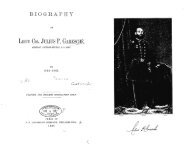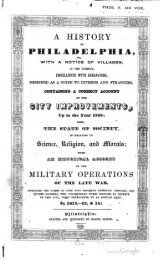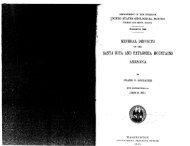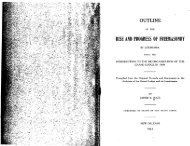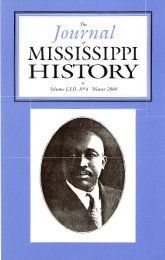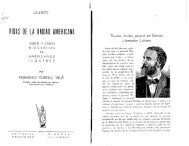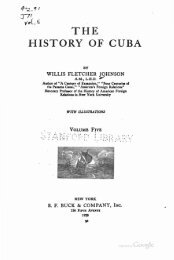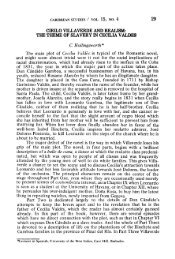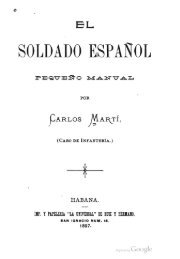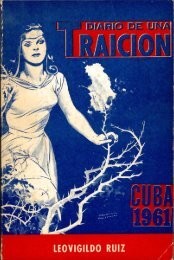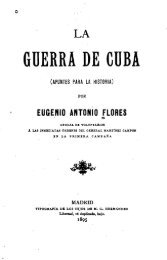Areas and Periods of Culture in the Greater Antilles
Areas and Periods of Culture in the Greater Antilles
Areas and Periods of Culture in the Greater Antilles
You also want an ePaper? Increase the reach of your titles
YUMPU automatically turns print PDFs into web optimized ePapers that Google loves.
262<br />
SOUTHWESTERN<br />
JOURNAL OF ANTHROPOLOGY<br />
for <strong>the</strong> division <strong>of</strong> Hispaniola between Haiti <strong>and</strong> <strong>the</strong> Dom<strong>in</strong>ican Republic, <strong>the</strong><br />
distribution <strong>of</strong> contemporary civilization is entirely <strong>in</strong>sular. Fish<strong>in</strong>g is now<br />
relatively unimportant <strong>and</strong>, before <strong>the</strong> advent <strong>of</strong> <strong>the</strong> airplane, <strong>the</strong>re was little<br />
<strong>in</strong>ter-isl<strong>and</strong> communication. It would be a mistake, however, to assume that<br />
conditions like <strong>the</strong>se necessarily held true for both <strong>the</strong> Ciboney <strong>and</strong> <strong>the</strong> Arawak.<br />
The apparent orientation <strong>of</strong> <strong>the</strong> Ciboney towards <strong>the</strong> l<strong>and</strong> has a bear<strong>in</strong>g upon<br />
<strong>the</strong> problem <strong>of</strong> <strong>the</strong>ir orig<strong>in</strong>. Such an orientation is more compatible with <strong>the</strong><br />
short over-water passage from Florida (or Yucatan) to Cuba than with <strong>the</strong> long<br />
maritime voyage from Venezuela, <strong>and</strong> to this extent it favors <strong>the</strong> <strong>the</strong>ory that <strong>the</strong><br />
Ciboney came from North America.<br />
On <strong>the</strong> o<strong>the</strong>r h<strong>and</strong>, <strong>the</strong> maritime orientation <strong>of</strong> <strong>the</strong> Arawak is more consistent<br />
with <strong>the</strong> <strong>the</strong>ory that <strong>the</strong>se Indians migrated from South America. It fur<strong>the</strong>r<br />
implies that Arawak culture orig<strong>in</strong>ated <strong>in</strong> a maritime or fluvial environment, <strong>and</strong><br />
to this extent collaborates <strong>the</strong> recently discovered evidence, cited above, that <strong>the</strong><br />
Arawak took <strong>of</strong>f from <strong>the</strong> Or<strong>in</strong>oco bas<strong>in</strong> when <strong>the</strong>y settled <strong>the</strong> <strong>Antilles</strong>.<br />
An important problem for future research is <strong>the</strong> extent to which <strong>the</strong> Arawak's<br />
maritime orientation enabled <strong>the</strong>m to ma<strong>in</strong>ta<strong>in</strong> contacts with <strong>the</strong> ma<strong>in</strong>l<strong>and</strong> dur<strong>in</strong>g<br />
<strong>the</strong> middle <strong>and</strong> late periods <strong>of</strong> <strong>the</strong>ir habitation <strong>of</strong> <strong>the</strong> <strong>Antilles</strong>. We have seen that<br />
<strong>the</strong> cult <strong>of</strong> zemis <strong>and</strong> <strong>the</strong> accompany<strong>in</strong>g styles probably developed locally <strong>in</strong> <strong>the</strong><br />
<strong>Antilles</strong>. It is hardly likely, however, that this development was unaffected by<br />
<strong>in</strong>fluences from <strong>the</strong> ma<strong>in</strong>l<strong>and</strong>.<br />
Certa<strong>in</strong> <strong>the</strong>ories have recently been advanced <strong>in</strong> connection with <strong>the</strong> Circum-<br />
Caribbean concept which would <strong>in</strong> effect derive both <strong>the</strong> cult <strong>of</strong> zemis60 <strong>and</strong> <strong>the</strong><br />
accompany<strong>in</strong>g ceramic complex"6 from <strong>the</strong> South American ma<strong>in</strong>l<strong>and</strong>. These are<br />
<strong>in</strong> conflict with <strong>the</strong> archaeological evidence from <strong>the</strong> <strong>Greater</strong> <strong>Antilles</strong>, as <strong>in</strong>terpreted<br />
above. Never<strong>the</strong>less, <strong>the</strong>y do reflect certa<strong>in</strong> general similarities between <strong>the</strong><br />
isl<strong>and</strong>s <strong>and</strong> <strong>the</strong> ma<strong>in</strong>l<strong>and</strong>. In <strong>the</strong> writer's op<strong>in</strong>ion, <strong>the</strong>se resemblances are best<br />
<strong>in</strong>terpreted as <strong>the</strong> result <strong>of</strong> secondary <strong>in</strong>fluences from <strong>the</strong> ma<strong>in</strong>l<strong>and</strong>, <strong>the</strong> exact<br />
nature <strong>of</strong> which rema<strong>in</strong>s to be determ<strong>in</strong>ed.<br />
ALEGRIA, RICARDO E.<br />
BIBLIOGRAPHY<br />
1948 La poblaci6n aborigen antillana y su relaci6n con otras areas de America<br />
(Actas y Documentas del III Congreso Historico Municipal Interamericano,<br />
pp. 233-246, San Juan).<br />
BASTIEN, REMY<br />
1944 Archeologie de la baie Port-au-Pr<strong>in</strong>ce, rapport prelim<strong>in</strong>aire (Bullet<strong>in</strong> du<br />
60 Steward, 1948, p. 14; 1949, map 22.<br />
61 Willey, 1949, p. 195, map 3.



